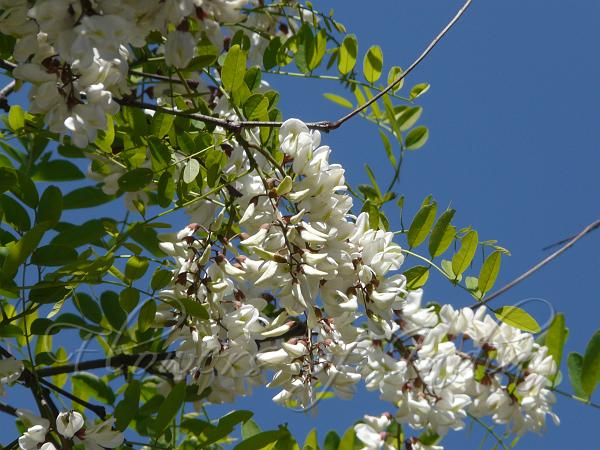|
| White Locust Tree |
|

|

| File size | 2434885 |
| Original date | 4/14/08 9:38 AM |
| Resolution | 2560 x 1920 |
| Flash | Flash did not fire, auto |
| Focal length | 81.1mm |
| Exposure time | 1/500s |
| Aperture | 6.3 |
| Focus Distance | |
| Metering Mode | Multi-segment |
| Camera make | Panasonic |
| Camera model | DMC-FZ18 |
| Sensor type | OneChipColorArea |
|
|
|
|
Photo: |
Botanical name: Robinia pseudoacacia Family: Fabaceae (Pea family)
White Locust Tree is a deciduous tree that grows to 14–25 m tall, with a
trunk up to 0.8 m diameter, with thick, deeply furrowed blackish bark. The tree is native to North America, introduced and widely cultivated in Europe. It was probably introduced in India by the British while developing the hill stations, where it is now seen. The
leaves are 10–25 cm long, pinnate with 9–19 oval leaflets, 2–5 cm long and
1.5–3 cm broad. Leaflets are rounded at both the ends and notched at the
tip. Each leaf usually has a pair of short thorns at the base, 1–2 mm long
or absent on adult crown shoots, up to 2 cm long on vigorous young plants.
The intensely fragrant flowers are white, borne in pendulous racemes 8–20
cm long, and are considered edible. The fruit is a legume 5–10 cm long,
containing 4–10 seeds. The species name pseudoacacia means false acacia. The name locust is said to have been given to
Robinia by Jesuit missionaries. The Bible tells the story of how John the
Baptist was kept alive in the wilderness by eating 'locusts', which were
not the insects, but the pods of the Carob tree, which have some
resemblance to locusts. When the Christian immigrants discovered Robinia
which has roughly similar pods, they were also called Locust tree.
| Identification credit: Scott Meyer | Photographed in Mussoorie, Uttarakhand. |
• Is this flower misidentified? If yes,